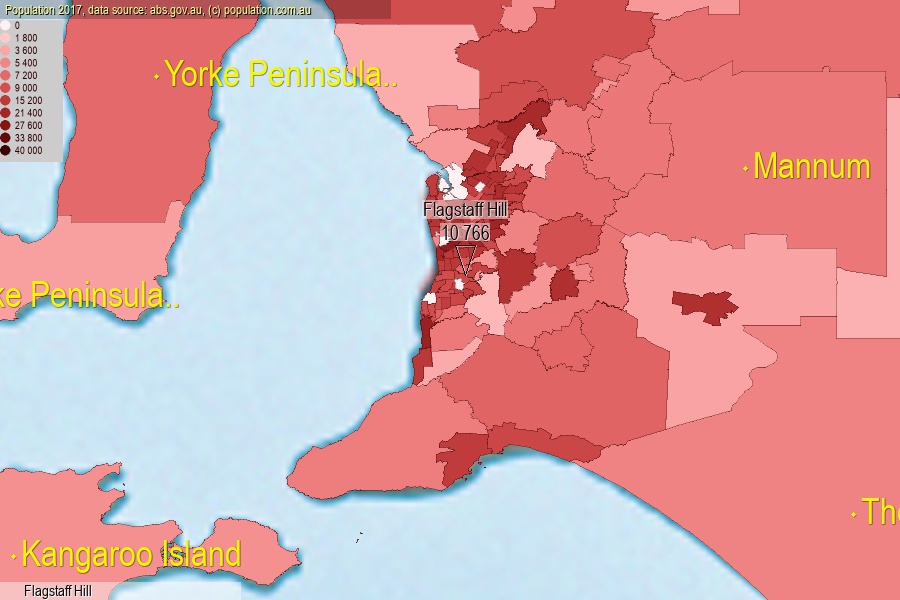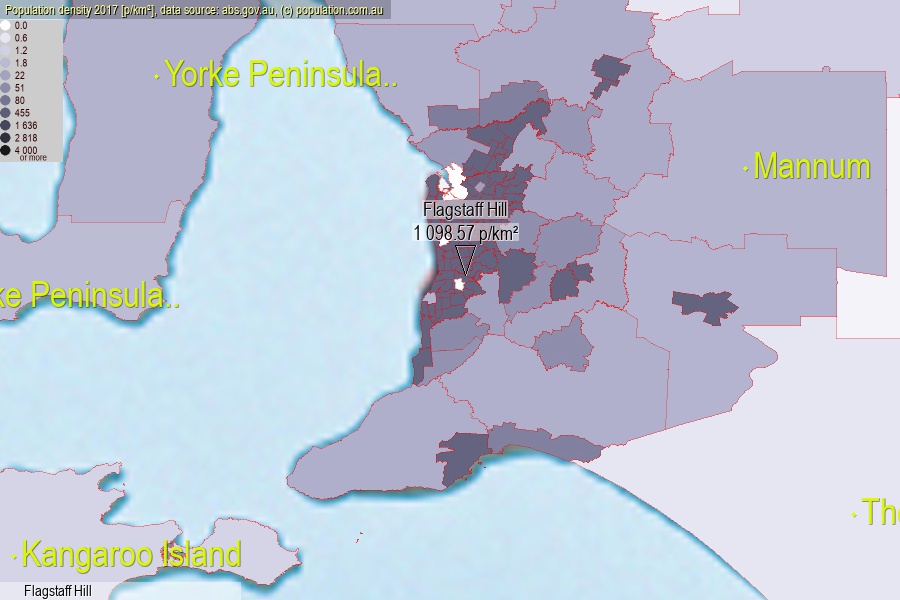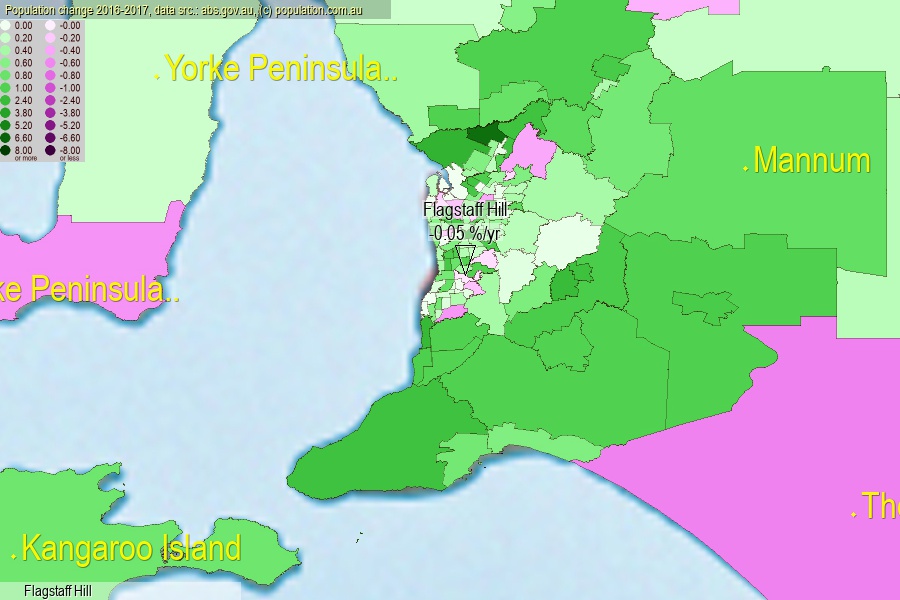 population.com.au
population.com.auLast official estimated population of Flagstaff Hill (as Statistical Area Level 2) was 10 766 people (on 2017-06-30)[2]. This was 0.04% of total Australian population and 0.621% of SA population. Area of Flagstaff Hill is 9.80 km², in this year population density was 1 098.57 p/km² . If population growth rate would be same as in period 2016-2017 (-0.05%/yr), Flagstaff Hill population in 2025 would be 10 726. [0]



Click to enlarge. Flagstaff Hill is located in the center of the images.
Population [people], population density [p./km²] and population change [%/year] [2]
View borders » (new window) [4]
[1991-1992] +2.39 %/Yr.
[1992-1993] +0.72 %/Yr.
[1993-1994] +0.57 %/Yr.
[1994-1995] +0.63 %/Yr.
[1995-1996] +0.34 %/Yr.
[1996-1997] +1.41 %/Yr.
[1997-1998] +1.34 %/Yr.
[1998-1999] +1.51 %/Yr.
[1999-2000] +1.37 %/Yr.
[2000-2001] +1.40 %/Yr.
[2001-2002] +0.57 %/Yr.
[2002-2003] +0.85 %/Yr.
[2003-2004] +0.19 %/Yr.
[2004-2005] +0.97 %/Yr.
[2005-2006] +0.85 %/Yr.
[2006-2007] +0.03 %/Yr.
[2007-2008] +1.01 %/Yr.
[2008-2009] +2.07 %/Yr.
[2009-2010] +0.79 %/Yr.
[2010-2011] +0.78 %/Yr.
[2011-2012] +0.78 %/Yr.
[2012-2013] -0.02 %/Yr.
[2013-2014] -0.08 %/Yr.
[2014-2015] -0.26 %/Yr.
[2015-2016] -0.14 %/Yr.
[2016-2017] -0.05 %/Yr.
[0] Calculated with linear interpolation from officially estimated population
[1] Read more about SA2 and Australian Statistical Geography Standard (ASGS) on abs.gov.au
[2] Population data from Australian Bureau of Statistics (Population and density: 2017; change: 2016-2017)
[3] Digital Boundaries: Australian Statistical Geography Standard (ASGS) 2016.
[4] Border coordinates are simplifyed using Ramer-Douglas-Peucker algorithm.